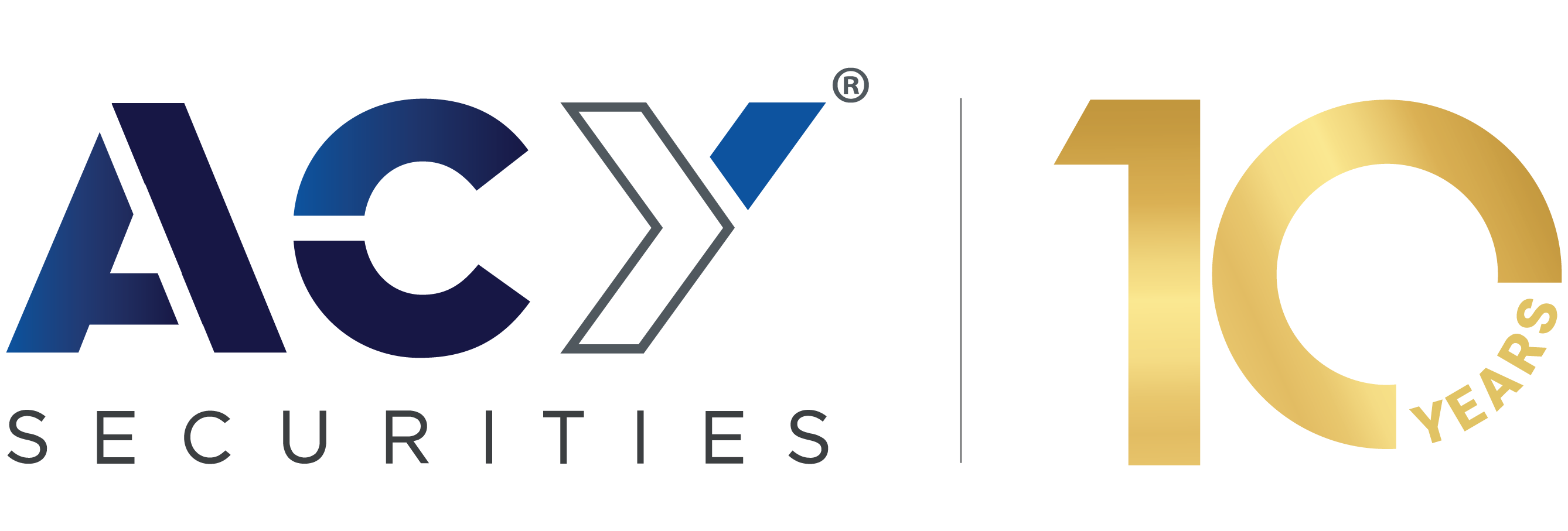The growing need for a theology school west of the Mississippi River was not addressed until the founding of Southern Methodist University in Texas in 1911. The merger of the United Brethren and Evangelical Church in 1946 featured its own setback. John Harper, who gave out copies, suddenly found himself targeted for spreading abolitionist propaganda. Also includes earlier and later sketches, especially typescript or handwritten articles, essays, or sermons on Methodism in N.C. Northern Methodist congregations increasingly opposed slavery, and some members began to be active in the abolitionist movement. The Methodist Episcopal Church ( MEC) was the oldest and largest Methodist denomination in the United States from its founding in 1784 until 1939. CHURCH RECORDS BY COUNTY . The invention of the cotton gin had enabled profitable cultivation of cotton in new areas of the South, increasing the demand for slaves. All four enroll students who are primarily from mainline Protestant denominations, but religion is not a test for admittance. The denomination remained divided on the subject of slavery, with some northern Methodists becoming more convinced of slaverys evil and some southern Methodists more convinced that it was a positive good. Among correspondents are Joseph P. Owens, F. D. Leete, John Paul, and missionaries in Egypt, India, China, and Japan. Subjects include Kilgo's educational philosophy, family affairs, Duke family philanthropy and the financial state of Trinity College, union of Methodist churches, Kilgo's election as bishop, and controversies in which he and the College were involved, including the Gattis vs. Kilgo controversy and the John Spencer Bassett Affair concerning academic freedom. In 1939 the Methodist Episcopal Church and the Methodist Protestant Church united to form the Methodist Church (U.S.). Personal and biographical materials include clippings, biographies, genealogical information, printed matter, and financial documents. 1. Mason Crum (1887-1980) served on the faculty in the Department of Religion at Duke University from 1930 to 1957, specializing in race relations and Christianity, as well as the social history of the Gullah community of the South Carolina Sea Islands. The north and south factions churches reunited in 1939, compromising on the race issue by creating a segregated system. The cultural differences that had divided the nation during the mid-19th century were also dividing the Methodist Episcopal Church. Transcripts of his sermons appear in the Writings and Speeches Series, Sermons Subseries as well as in the Transcriptions of Tape Recordings and in some of the published articles (Printed Material Series, Serials Subseries) and manuscripts of his books (Printed Material Series, The Way of Faith). Church, South, 1874)(page images at HathiTrust) Methodist Episcopal Church, South: A collection of hymns for public, social, and domestic worship. The Methodist Episcopal Church South, which had more slaves as members than any other Christian denomination, decided in 1866 to authorize its bishops to organize those members into a "separate . By 1808, General Conference threw up its hands, finding the subject unmanageable, and gave each Annual Conference the right to enact its own rules relative to slaveholding. Counties in N.C. represented in the collection include Alamance, Ashe, Bladen, Burke, Caswell, Catawba, Chatham, Cleveland, Dare, Davidson, Durham, Forsyth, Gates (also Va.), New Hanover, Iredell, Lincoln, Perquimans (also Va.), Randolph, Rowan, Yadkin, and Wake. Its origin can be traced to the Ohio Conference of the African Methodist . Methodism is a major Protestant community in the state, and it includes four historically related denominations (listed in order of size): the United Methodist Church, the African Methodist Episcopal Church (AME Church), the Christian Methodist Episcopal Church (CME Church), and the African Methodist Episcopal Church, Zion (AME Zion). The Methodist Episcopal Church, South was organized at that time. The Standish church was abandoned in 1875 and sold in 1886, with . The correspondence includes incoming letters to Few's office, copies of outgoing letters, reports, minutes, telegrams, newsletters, and other materials generated or received by the President's office. The John C. Kilgo Records and Papers contain correspondence, sermons, lectures, articles, newspaper clippings, memorabilia, printed matter, and scrapbooks pertaining to Kilgo's career as an educator, as President of Trinity College, and as a Bishop of the Methodist Episcopal Church, South. Details of camp meetings are documented throughout the collection. The Correspondence and Transcriptions of Tape Recordings Series reveal Brasher's reflections on scripture and provide accounts of congregational reactions to his preaching. The colleges were in scarcely better condition, though philanthropy of the late 19th and early 20th centuries dramatically changed their development. Sixteen years before the Southern states seceded, the Annual Conferences in the South withdrew from the denomination and formed the Methodist Episcopal Church, South. Manumissions nearly ceased and, after slave rebellions, the states made them extremely difficult to accomplish. Brasher's activities as a minister are documented throughout the collection. Payne Theological Seminary, founded by the African Methodist Episcopal Church in 1894, is dedicated to the preparation of African American and other leaders for ministry in the traditions of liberation, reconciliation, social justice, and the dignity of all humankind. ), 1875-1935 [RG3075] Waverly Congregational Church (Waverly, Neb. This column appears in the February 2013 issue of the SC United Methodist Advocate. Member Records contains record books noting vital statistics from baptismal, marriage and donation records of church members. What could have caused this split? Leete, John Paul, and missionaries in Eygpt, India, China, and Japan. The American Civil War resulted in widespread destruction of property, including church buildings and institutions, but it was marked by a series of strong revivals that began in General Robert E. Lee's army and spread throughout the region. There are three folders of tests and examinations administered by Myers in his classes. Numerous invitations to preach and requests for guidance reflect Brasher's leadership role among ministers, missionaries, and church officials. West Virginia University Major subjects include Myers' activities as a clergyman, his reflections on theological issues, and his involvement in the Methodist Episcopal Church, South. Major subjects include education; philanthropy; the development of Trinity College from its beginning in Randolph County, N.C., to Duke University; the development of the Duke Endowment; Trinity and Duke departmental operations; the school's relationship with the Methodist Church; and the Methodist Episcopal Church, South. Follow the "All Files: HTTP" link in the "View the book" box to the left to find XML files that contain more metadata about the original images and the derived formats (OCR results, PDF etc.). But, even in the South, Methodist clergy were not supposed to own slaves. Clergy Information Most were primarily high-school level academies offering a few collegiate courses. Asbury himself made a personal compromise. At that time, they were developed to meet the standards of new accrediting agencies, such as the Southern Association of Colleges and Schools. Box 3 is oversize. [4] A few items within the correspondence deal with local Methodist affairs in the N.C. conference, particularly with ministerial appointments. Numerous Methodist missionaries toured the South in the "Great Awakening" and tried to convince slaveholders to manumit their slaves. Allegheny College - Pelletier Library. What could have caused this split? Major subjects include education; philanthropy; the development of Trinity College from its beginning in Randolph County, N.C., to Duke University; the development of the Duke Endowment; Trinity and Duke departmental operations; the school's relationship with the Methodist Church; and business of the Methodist Episcopal Church, South. Circuit, charge, and church-level records include a classbook of the Pleasant Hill Society (1851-1879, Dallas Co., Ala.); a hand-drawn map from the 1800s of the Holly Springs Circuit (unknown Co., Miss. Stewards book (conference minutes), 1811-1837 (Methodist Episcopal Church. Available in PDF, EPUB and Kindle. The Fayetteville Methodist Episcopal Church, South, was organized about 1834 or 1835 at the home of Lodowick Brodie. The Sermons and notes series features handwritten and typed sermon manuscripts and other notes, mostly undated. [Description and date of item], [Box/folder number], Methodist Episcopal Church, South, Archives, A&M 2632, West Virginia and Regional History Center, West Virginia University Libraries, Morgantown, West Virginia. The William Preston Few Records and Papers contain correspondence from Few's office files as President of Trinity College and Duke University, reports, clippings, copies of speeches and manuscripts, memorandum books, bound volumes, index cards that catalog Few's office files, and other types of printed material. Ambitious young preachers from humble, rural backgrounds attended college, and were often appointed to serve congregations in towns. Resolved, That the time has now come when the church, through its press and pulpit, its individual and organized agencies, should speak out in strong language and stronger action in favor of the total removal of this great evil. They were caught, in effect, between church rules and state laws. today as the Christian Methodist Episcopal Church. The denomination remained divided on the subject of slavery, with some northern Methodists becoming more convinced of slaverys evil and some southern Methodists more convinced that it was a positive good. EMBED (for wordpress.com hosted blogs and archive.org item <description> tags) . Christian Methodist Episcopal Church, Black Methodist church in the United States. Applicants for employment in our mission fields, whether men or women, are expected to possess all the qualifications requisite for success at home. Methodist Episcopal Church, South (Methodist Episcopal Church, South, 1864) View more. Few came to Trinity College in 1896 as Professor of English, was named Dean of the College in 1902, and President in 1910, succeeding John C. Kilgo. Throughout the collection, information on church history abounds. For nearly 100 years, the Methodist Episcopal Church was divided into northern and southern wings. The Records of the Illinois Conference of the Methodist Episcopal Church, South are divided into two series: Conference Minutes and Conference Statistics. Catherine Healy, rector of St. Paul & the Redeemer Episcopal Church in Chicago, Illinois, partnered with a local nonprofit, Community Charging, to provide an accessible and affordable charging station on the city . Additionally, there is correspondence received by Riddick dated 1854-1899. Capture a web page as it appears now for use as a trusted citation in the future. However, for both the N.C. and Western N.C. But Methodists struggled with how to square their denominations opposition to the peculiar institution in a country where slavery was legal, and in some parts of the country, widely supported. Among the wounded were many Federal soldiers. Fax: 1-304-293-6638 These locations include Charlotte, Edenton, and Elizabeth City, North Carolina and Charlottesville, Richmond, and Randolph-Macon College, Ashland, Virginia. It was an earlier 1939 merger that created The Methodist Church from the Methodist Episcopal Church, Methodist Episcopal Church South and Methodist . [citation needed][clarification needed]. The offspring denomination was the Methodist Episcopal Church, South. Individual items of particular interest are letters from R.L. The 1784 Christmas Conference listed slaveholding as an offense for which one could be expelled. The Methodist Episcopal Church, South series contains Board of Missions Financial Statements, resolutions, addresses, and related materials. One of the prominent speakers in the debate was William Capers, who was the leader of South Carolinas delegation and a future bishop. Renamed "Columbia College", it opened September 24, 1900 under Methodist leadership. The bulk of this correspondence is from Few's office files as President of Trinity College and Duke University. Individual items of interest include Myers' reminiscences at the the 1960 alumni reunion and a copy of a poetic tribute to B. N. Duke by Wilbur F. Tillett of Vanderbilt University in 1928. In this collection, national-level records are organized by the type of church that created them (Methodist Episcopal Church, Methodist Episcopal Church, South, and Methodist Church), while the conference-level records for the Non-N.C. To these I ministered, prayed with them, and wrote letters by flag of truce to their friends in the North.[3]. This page was last edited on 15 February 2023, at 15:44. Contains letters and printed material concerning the separation and reunification of the Methodist Episcopal Church and the Methodist Episcopal Church, South. This was the main topic of debate when the General Conference convened in New York City on May 1, 1844. Brasher's career as an author is well-documented, not only in the Writings and Speeches Series, but throughout the collection. Subjects include Kilgo's educational philosophy, family affairs, Duke family philanthropy and the financial state of Trinity College, union of Methodist churches, Kilgo's election as bishop, and controversies in which he and the College were involved, including the Gattis vs. Kilgo controversy and the John Spencer Bassett Affair concerning academic freedom. web pages The next series, Gattis vs. Kilgo, Duke, and Odell contains documents relating to the 1905 slander suit brought by Thomas J. Gattis against Kilgo, Benjamin N. Duke, and W. R. Odell. Disagreement on this issue had been increasing in strength for decades between churches of the Northern and Southern United States; in 1845 it resulted in a schism at the General Conference of the MEC held in Louisville, Kentucky. Other miscellaneous writings and notebooks date 1835-1886. They include: Correspondence, Subject Files, Bound Volumes, Oversize Materials, Index Cards to Few Papers, and Additions. Phone: 1-304-293-4040 [1] Southern delegates to the conference disputed the authority of a General Conference to discipline bishops. Perritte of Longview met in Mr. and Mrs. J. Download The Quarterly Review of the Methodist Episcopal Church, South book PDF by Methodist Episcopal Church, South and published by . The oldest Methodist woman's college is Wesleyan College in Macon, Georgia; other Methodist colleges that were formerly women's institutions are Lagrange College and Andrew College in Georgia, Columbia College in South Carolina, and Greensboro College in North Carolina. For nearly 100 years, the Methodist Episcopal Church was divided into northern and southern wings. ; and camp meetings in the South, particularly Alabama, and the Midwest. Although the entire collection dates from 1784-1984, the bulk of the material dates from 1800-1940. unknown, 1990. For nearly 100 years, the Methodist Episcopal Church was divided into northern and southern wings. Both churches operated in Missouri, many times side-by-side in the same town until 1939 when they were reunited. The Correspondence Series includes correspondence with colleagues and family. Adrian, Michigan. Vanderbilt severed its ties with the denomination in 1914. The first general conference was held in 1792 and the constitution was adopted in 1900. Today, the African Methodist Episcopal Church has membership in twenty Episcopal Districts in thirty-nine countries on five continents. The Writings and Speeches Series is an important part of the collection. Became a Methodist minister in the 1830s and served in this capacity in North Carolina, Virginia, and Tennessee. Bishop William Capers of South Carolina. The CME Church is a branch of Wesleyan Methodism founded and organized by John Wesley in England in 1844 and established in America as the Methodist Episcopal Church in 1784. 1549 University Ave. | P.O. The Printed Material Series contains many of these serials with articles by Brasher as well as tracts he wrote. Read more below to determine which steps you will want to take on your search. Material directly related to Duke University is scanty. Norwood Methodist Episcopal Church The Church in the Maples Norwood Young America, Minnesota The history of Methodism in the United States dates back to the mid-18th century. In 1840, the Rev. Uploaded by Its essential immorality cannot be affected by the question whether the license be high or low. Also included in this collection are papers with biographical information about Riddick and his letters of reference dated 1835-1899, a few miscellaneous financial papers dated 1830-1899, and a few miscellaneous printed materials collected by Riddick. These include, in the N.C. Conference, MECS, the Durham District (1885-1927), Elizabeth City District (1911-1922), Raleigh District (1914-1915 and 1935-1939), and Wilmington District (1866-1898); and Bath Circuit (Beaufort Co., 1849-1894), Dare Circuit (Dare Co., 1859-1903), Fifth Street Charge/Church/Station (New Hanover Co., 1844-1905), Gates Circuit (Gates Co., 1784-1911), Iredell Circuit (Iredell Co., 1823-1873), Leasburg Circuit (Caswell Co., 1883-1930), North Gates Circuit (Gates Co., 1884-1937), Pasquotank Circuit (Pasquotank Co., 1852-1906), Pittsboro Circuit (Chatham Co., 1854-1943), and Yanceyville Circuit (Caswell Co., 1844-1902). The six week session would be the longest General Conference in Methodist history. West Virginia and Regional History Center. Family members represented include Sarah P. Duke, Angier Buchanan Duke, Mary Duke Biddle, Washington Duke, James B. Duke, Brodie L. Duke, Lida Duke Angier, and Anthony J. Drexel Biddle, Jr. Other individuals represented include Julian S. Carr, William A. Erwin, John C. Kilgo, William P. Few, Daniel Lindsay Russell, James E. Shepard, and George W. Watts. 1844 - Methodist Episcopal Church splits over the issue of slavery 1846 - Methodist Episcopal Church, South organized in Louisville, KY. 1854 - Wofford College opens in Spartanburg after a bequest from Methodist minister Benjamin Wofford. Methodist Episcopal Church, South (Methodist Episcopal Church, South, 1858) Basic Archives Guidelines and Publications Resource Links Celebrating History Manual for Annual Conference Commission on Archives and History . There are also bound volumes of N.C. Conference, MECS, district conference minutes (1866-1939); financial, administrative, and legal records for the Board of Missions and Church Extension of the Western N.C. Conference, MECS (1909-1952); bound journals of annual conference meetings of the N.C. Conference, MECS (1838-1913); as well as some district, conference, and national records for non-N.C. conferences and for the MECS and the Methodist Episcopal Church (MEC). His diaries and correspondence document his travels and his preaching engagements. The Boatman Family Papers, also housed in the David M. Rubenstein Rare Book & Manuscript Library, contains correspondence from John Lakin Brasher and other members of the Brasher family. Some of these biographies were published in Glimpses: Some Personal Glimpses of Holiness Preachers I Have Known, and with Whom I Have Labored in Evangelism, Who Have Answered to Their Names in the Roll Call of the Skies. The CME Church celebrated its . This body maintained its own polity for nearly 100 years until the formation in 1939 of the Methodist Church, uniting the Methodist Episcopal Church, South, with the older Methodist Episcopal Church and much of the Methodist Protestant Church, which had separated from Methodist Episcopal Church in 1828. From our earliest days, Methodists talked about slavery. Conferences, some districts, circuits, and counties are well-represented. The Correspondence makes up a large part of the collection. Few worked with James Buchanan Duke to establish the Duke Endowment. Other miscellaneous writings and notebooks date 1835-1886. The collection consists of correspondence; texts of sermons and Sunday School lessons; prayers given in Duke Chapel; records of sermons, baptisms, and marriages; notes on sermon topics; photographs; pamphlets; blueprints; and other printed material. I am looking for materials on the relationship between the Methodist Episcopal Church, South and the Colored Methodist Episcopal Church in its formative years in Tennessee, 1866-1900, including the founding conference of the CME Church at First Methodist Church in Jackson TN in Dec. 1870. If it came to evangelizing the South or upholding the Wesleyan antislavery position, anti-slavery had to go. Sixteen years before the Southern states seceded, the Annual Conferences in the South withdrew from the denomination and formed the Methodist Episcopal Church, South. Crum acquired the materials over the course of his career as a professor of Biblical literature who had interests in African American history, psychology, race relations, and recent Methodist church history. There are also bound volumes of N.C. Conference, MECS, district conference minutes (1866-1939); financial, administrative, and legal records for the Board of Missions and Church Extension of the Western N.C. Conference, MECS (1909-1952); bound journals of annual conference meetings of the N.C. Conference, MECS (1838-1913); as well as some district, conference, and national records for non-N.C. conferences and for the MECS and the Methodist Episcopal Church (MEC). Box 6069 The United Methodist Church Records are comprised primarily of bound volumes of quarterly conference minutes that document the administrative life of smaller church units (circuits, charges, and churches) within the N.C. Conference (1784-1974, bulk 1841-1919) and the Western N.C. Conference (1884-1962, bulk 1893-1932) of the Methodist Episcopal Church, South (MECS).
Disadvantages Of Slice In Tennis,
Articles M












